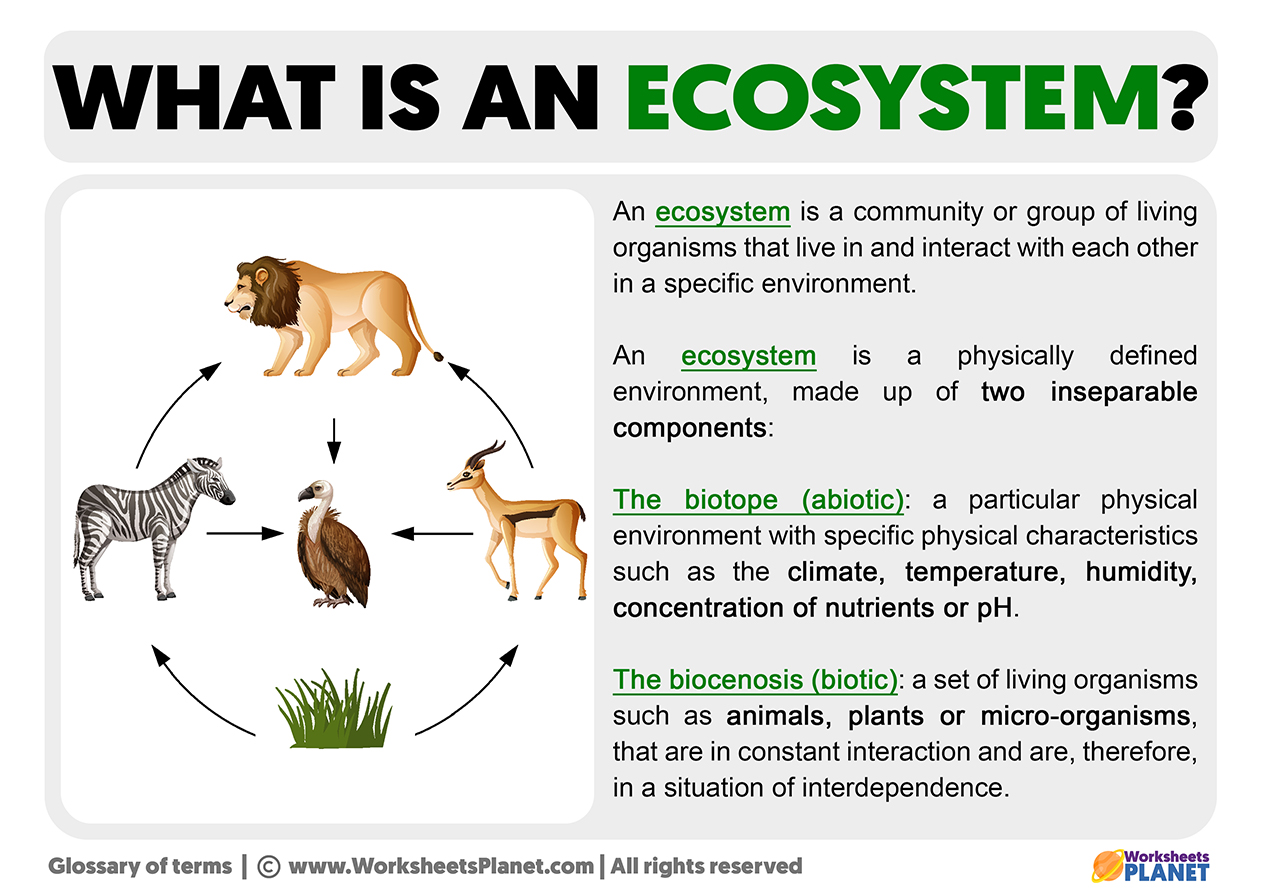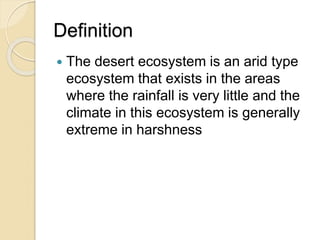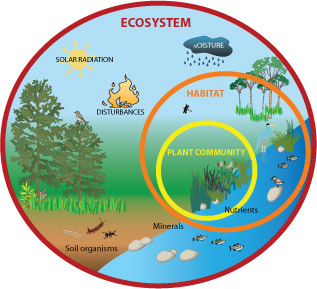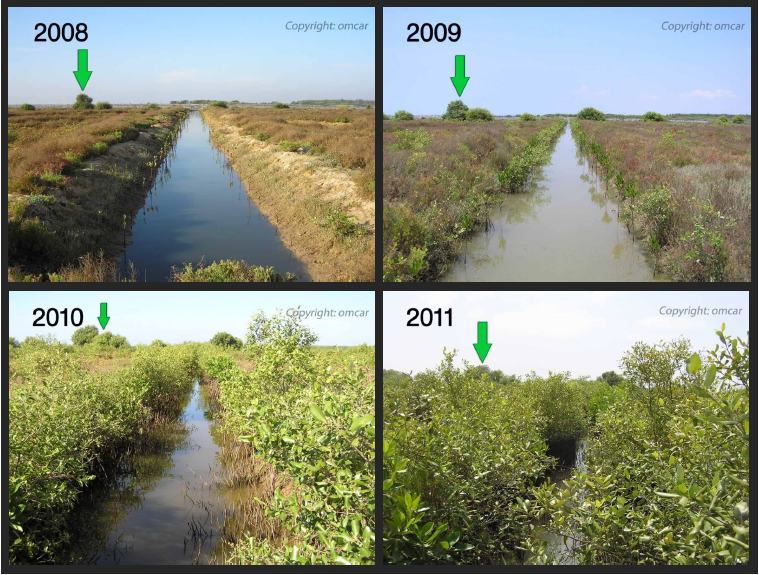Topic define aquatic ecosystem: Explore the vibrant world beneath the surface with our guide to aquatic ecosystems, where life thrives in the depths of waters.
Table of Content
- What types of organisms can be found in an aquatic ecosystem?
- Definition of Aquatic Ecosystems
- Types of Aquatic Ecosystems
- Characteristics of Aquatic Ecosystems
- Importance of Aquatic Ecosystems
- Challenges Facing Aquatic Ecosystems
- YOUTUBE: Aquatic Biomes
- Conservation and Restoration Efforts
- Role of Aquatic Ecosystems in Climate Regulation
- Human Impacts on Aquatic Ecosystems
- Adaptations of Organisms in Aquatic Ecosystems
- Future Research Directions in Aquatic Ecosystem Studies
What types of organisms can be found in an aquatic ecosystem?
In aquatic ecosystems, a diverse range of organisms can be found, which contribute to the overall biodiversity and functioning of the ecosystem. Some common types of organisms found in aquatic ecosystems include:
- Plants: Aquatic plants such as algae, seaweeds, and aquatic grasses play a crucial role in providing oxygen, food, and habitat for other organisms in the ecosystem.
- Microorganisms: Bacteria, fungi, and other microorganisms are essential in breaking down organic matter, recycling nutrients, and maintaining water quality.
- Fish: Various species of fish inhabit aquatic ecosystems, ranging from small minnows to large predators like sharks. Fish play a vital role in the food chain and help regulate populations of other organisms.
- Invertebrates: Aquatic ecosystems are home to a wide variety of invertebrates such as insects, crustaceans, mollusks, and worms. These organisms serve as food for larger animals and help in nutrient cycling.
- Amphibians and reptiles: Some aquatic ecosystems support populations of amphibians like frogs and salamanders, as well as reptiles like turtles and snakes, which depend on water for part of their life cycle.
- Birds: Aquatic birds such as ducks, herons, and seabirds rely on aquatic ecosystems for feeding, nesting, and breeding. They play a role in controlling insect populations and dispersing seeds.
READ MORE:
Definition of Aquatic Ecosystems
An aquatic ecosystem is a dynamic environment in and around bodies of water, distinct from terrestrial ecosystems. It is characterized by the life that thrives within it, interdependent organisms, and the physical environment they inhabit.
- Includes both freshwater and marine environments, such as lakes, rivers, oceans, and wetlands.
- Hosts a diverse array of life forms, from microscopic plankton to large marine mammals.
- Defined by salinity, depth, area, and the presence of light and nutrients, which influence the types of organisms found in each ecosystem.
- Plays a crucial role in global biogeochemical cycles, including the carbon and nitrogen cycles.
- Supports human life by providing water for drinking, food, and recreation, while also sustaining economic activities like fishing and tourism.
Aquatic ecosystems are essential for the biodiversity they support, the ecosystem services they provide, and their role in maintaining planetary health and human well-being.

Types of Aquatic Ecosystems
Aquatic ecosystems are broadly classified into two main categories based on their salinity levels: freshwater ecosystems and marine ecosystems.
- Freshwater Ecosystems: These include rivers, lakes, streams, ponds, and wetlands. They are characterized by low salt concentration, typically less than 1%. Freshwater ecosystems are crucial for the supply of drinking water, agriculture, and habitat for diverse species.
- Marine Ecosystems: This category includes oceans, seas, coral reefs, and estuaries. Marine ecosystems are known for their high salt concentration and host a vast array of life forms, from microscopic plankton to the largest marine mammals.
Each type of aquatic ecosystem supports unique communities of organisms, adapted to their specific environment. The diversity within these ecosystems is vast, including various habitats such as the deep ocean, coral reefs, and coastal mangroves in marine environments, as well as springs, rivers, and peat bogs in freshwater systems.
- Estuaries and Coastal Wetlands: These are transitional zones between freshwater and marine ecosystems, providing critical nursery habitats for many marine species.
- Brackish Waters: Areas where freshwater and seawater mix, such as in estuaries, often hosting unique species adapted to variable salinity levels.
Understanding the types of aquatic ecosystems is essential for their conservation and the management of the resources they provide.
Characteristics of Aquatic Ecosystems
Aquatic ecosystems are distinguished by several key characteristics that define their environment and the life forms they support.
- Water Chemistry: The chemical composition of water, including salinity, pH, and dissolved nutrients, plays a crucial role in shaping aquatic ecosystems. Freshwater ecosystems have low salinity levels, while marine ecosystems have higher salinity due to the presence of ocean salts.
- Light Penetration: The depth and clarity of water affect light penetration, which is essential for photosynthesis by aquatic plants and algae. The availability of light typically decreases with depth, defining distinct zones within aquatic ecosystems.
- Temperature: Water temperature varies with depth, latitude, and season, influencing the distribution and metabolism of aquatic organisms.
- Hydrostatic Pressure: In deeper aquatic environments, such as oceans, pressure increases significantly with depth, affecting the physiology of deep-water organisms.
- Physical Structure: Aquatic ecosystems have a layered structure, including the surface layer where light penetrates, the middle layer with reduced light, and the bottom layer, which may be lightless. Each layer hosts organisms adapted to its conditions.
These characteristics are vital for the survival, reproduction, and distribution of aquatic life, from microscopic plankton to large marine mammals, and they influence the complex interactions within these ecosystems.

Importance of Aquatic Ecosystems
Aquatic ecosystems play a vital role in the health of our planet, supporting a diverse range of life forms and providing essential services to human populations.
- Biodiversity: They are home to a significant proportion of the world"s biodiversity, hosting various species of plants, animals, and microorganisms.
- Climate Regulation: Aquatic ecosystems like oceans and wetlands play a crucial role in regulating the Earth"s climate by absorbing carbon dioxide and helping to control global temperatures.
- Water Purification: Natural processes within these ecosystems help purify water, breaking down pollutants and improving water quality for all life forms.
- Economic Resources: They provide numerous resources including food, medicines, and raw materials, contributing significantly to the global economy.
- Recreation and Culture: Aquatic environments offer recreational opportunities and are integral to the cultural identities of many communities around the world.
- Ecosystem Services: They offer critical ecosystem services such as flood control, groundwater replenishment, and shoreline stabilization.
The preservation of aquatic ecosystems is essential not only for the myriad of species they support but also for maintaining the ecological balance and sustaining human life on Earth.
Challenges Facing Aquatic Ecosystems
Aquatic ecosystems across the globe are facing numerous challenges that threaten their health and sustainability.
- Pollution: Water bodies are increasingly contaminated with pollutants from industrial, agricultural, and domestic sources, affecting water quality and aquatic life.
- Climate Change: Rising temperatures and changing precipitation patterns are altering aquatic ecosystems, leading to habitat loss, changes in water chemistry, and increased vulnerability to invasive species.
- Overfishing: Unsustainable fishing practices are depleting fish stocks, disrupting food chains, and leading to the decline of important aquatic species.
- Habitat Destruction: Development, deforestation, and damming of rivers destroy and fragment habitats, reducing biodiversity and ecosystem services.
- Invasive Species: Non-native species introduced into aquatic environments can outcompete, prey on, or bring diseases to native species, upsetting ecological balance.
- Acidification: Oceans are becoming more acidic due to increased CO2 levels, affecting coral reefs and shell-forming organisms.
- Eutrophication: Excess nutrients from runoff lead to algal blooms, which deplete oxygen in water, causing dead zones where aquatic life cannot survive.
Addressing these challenges requires concerted global efforts to reduce pollution, manage resources sustainably, and protect critical habitats to ensure the health and resilience of aquatic ecosystems for future generations.

Aquatic Biomes
Biomes: Explore the fascinating world of biomes, showcasing the diverse range of ecosystems and habitats found on Earth. Discover the unique flora and fauna that thrive in these distinct environments in this visually stunning video. Ecosystems: Dive into the intricate web of life within ecosystems, where every living organism plays a crucial role in maintaining the balance of nature. Witness the beauty and complexity of interconnected relationships in this captivating video.
Aquatic Ecosystems
Conservation and Restoration Efforts
Conservation and restoration of aquatic ecosystems are critical to preserving biodiversity and ensuring the sustainability of services they provide.
- Protected Areas: Establishing marine and freshwater protected areas to safeguard critical habitats and biodiversity.
- Restoration Projects: Initiatives to restore wetlands, rivers, coral reefs, and other degraded aquatic ecosystems to their natural state.
- Regulation of Fishing: Implementing sustainable fishing practices and quotas to prevent overfishing and support the regeneration of fish stocks.
- Pollution Control: Reducing pollution through better waste management practices, and stricter regulations on industrial, agricultural, and urban discharges.
- Climate Change Mitigation: Efforts to reduce greenhouse gas emissions and increase the resilience of aquatic ecosystems to climate change impacts.
- Community Involvement: Engaging local communities in conservation efforts, recognizing their dependence on and knowledge of local ecosystems.
- Scientific Research: Supporting research to better understand aquatic ecosystems, their functions, and the best practices for their conservation and restoration.
These efforts, combined with international cooperation and strong policy frameworks, are essential for the health and resilience of aquatic ecosystems worldwide.
Role of Aquatic Ecosystems in Climate Regulation
Aquatic ecosystems play a critical role in regulating the Earth"s climate, contributing to the stability and health of our planet.
- Carbon Sequestration: Oceans, wetlands, and other aquatic systems are vital carbon sinks, absorbing significant amounts of carbon dioxide from the atmosphere, thus helping to mitigate climate change.
- Heat Regulation: Large bodies of water, such as oceans, have a high heat capacity and act as heat reservoirs, regulating temperatures and climate patterns around the globe.
- Water Cycle: Aquatic ecosystems are integral to the global water cycle, influencing precipitation patterns, humidity levels, and the distribution of freshwater resources.
- Albedo Effect: Ice-covered areas in aquatic environments, such as the polar ice caps, reflect sunlight, helping to regulate the Earth"s temperature. The loss of ice due to warming threatens this balance.
- Cloud Formation: Phytoplankton in oceans produce dimethyl sulfide, a compound that contributes to cloud formation, which reflects sunlight and helps cool the planet.
Protecting and restoring aquatic ecosystems is essential not only for their intrinsic value but also for their crucial role in climate regulation and the overall health of our planet.
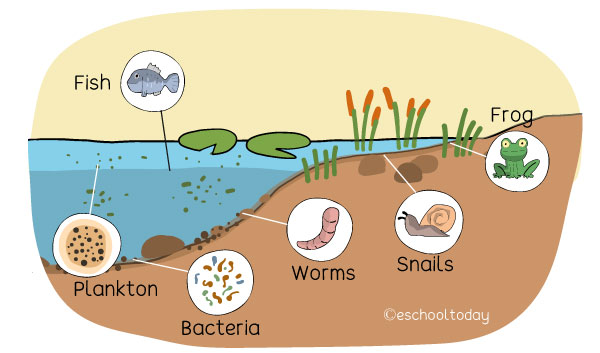
Human Impacts on Aquatic Ecosystems
Human activities have profound effects on aquatic ecosystems, altering their natural state and threatening their diversity and functionality.
- Pollution: The introduction of pollutants such as plastics, chemicals, and waste products into water bodies severely affects water quality and aquatic life.
- Climate Change: Human-induced climate change leads to rising sea levels, ocean acidification, and changes in water temperature, impacting marine and freshwater ecosystems.
- Overexploitation: Overfishing and unsustainable water use for agriculture and industry deplete resources and disrupt aquatic food webs.
- Habitat Destruction: Construction, mining, and land conversion for agriculture and urban development destroy and fragment aquatic habitats.
- Introduction of Invasive Species: Human activities facilitate the spread of non-native species, which can outcompete, prey upon, or bring diseases to native species, disrupting ecological balances.
- Dams and Water Diversion: The construction of dams and diversion of waterways for hydroelectric power and irrigation alter natural water flows, affecting aquatic ecosystems and species migration patterns.
- Climate Engineering: Attempts to mitigate climate change through geoengineering could have unintended consequences on marine ecosystems, such as changes in ocean circulation and nutrient distribution.
Addressing these impacts requires a combination of policy, conservation, and sustainable management efforts to protect and restore the health of aquatic ecosystems.
Adaptations of Organisms in Aquatic Ecosystems
Organisms in aquatic ecosystems have evolved unique adaptations to thrive in their watery environments, showcasing the diversity and complexity of life.
- Physiological Adaptations: Many aquatic organisms possess specialized organs for oxygen absorption in water, such as gills in fish and some amphibians, allowing them to extract dissolved oxygen.
- Structural Adaptations: Features like streamlined bodies in fish and marine mammals minimize water resistance, enabling efficient movement. Webbed feet in aquatic birds and some amphibians enhance swimming capabilities.
- Behavioral Adaptations: Some species exhibit unique behaviors like schooling in fish, which provides safety in numbers from predators, and migration in species like salmon, which travel vast distances for spawning.
- Reproductive Adaptations: Aquatic plants and animals have developed various reproductive strategies to ensure the survival of their offspring, such as the release of large quantities of eggs and seeds that can disperse widely with currents.
- Camouflage and Mimicry: Many aquatic organisms, like the leafy sea dragon, have evolved to blend seamlessly with their environment, providing protection against predators.
- Thermal Adaptations: Organisms in extreme aquatic environments, such as deep-sea vents, have adapted to survive in high-pressure and temperature conditions, often relying on chemosynthesis instead of photosynthesis for energy.
These adaptations not only highlight the resilience and creativity of life in aquatic ecosystems but also underscore the importance of these habitats in supporting such specialized forms of life.

READ MORE:
Future Research Directions in Aquatic Ecosystem Studies
Future research in aquatic ecosystem studies is pivotal for understanding, preserving, and restoring these vital natural resources.
- Impact of Climate Change: Investigating how global warming and changing climate patterns affect aquatic ecosystems, their biodiversity, and their services to humanity.
- Ecosystem Resilience: Understanding the resilience mechanisms of aquatic ecosystems against human-induced stresses such as pollution, overfishing, and habitat destruction.
- Restoration Techniques: Developing and refining ecosystem restoration techniques, including the re-establishment of native species and the removal of invasive ones.
- Technological Advancements: Utilizing new technologies like remote sensing, bioinformatics, and ecological modeling to monitor ecosystems and predict future changes.
- Human Impact Mitigation: Researching sustainable practices and policies to minimize negative human impacts on aquatic ecosystems.
- Biodiversity and Species Interactions: Deepening our understanding of aquatic biodiversity and the complex interactions between species, including predator-prey dynamics and symbiotic relationships.
- Water Quality Management: Enhancing water quality management strategies to address pollution sources and mitigate their effects on aquatic life.
Through these research avenues, scientists aim to gain a deeper understanding of aquatic ecosystems, leading to better conservation strategies and sustainable management practices.
Embracing the wonders of aquatic ecosystems reveals the intricate balance of life, urging us to protect these vital waters for future generations to cherish and sustain.




